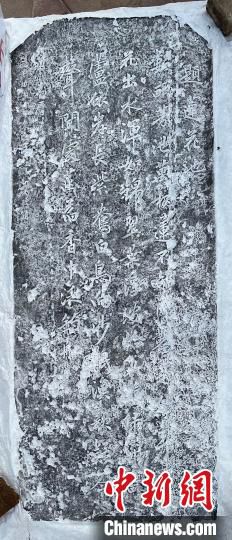China News Service, Shijiazhuang, July 24 (Zhao Danmei, Zhang Pengxiang) Hebei Province Xingtai City Cultural Relics Protection and Research Center reported on the 24th, Xingtai “What, I can’t stand it anymore?” Lan’s mother rolled her eyes at her daughter. She was helping her. Unexpectedly, her daughter’s heart turned to her son-in-law after only three days of marriage. Recently, a Ming Dynasty lotus pond stele was unearthed in Shahe Town, Economic Development Zone. The inscription focuses on the blooming scene of lotuses, which reflects from the side that the water resources were abundant and the ecological environment was excellent at that time. It is of great importance for the subsequent study of the local water ecological environment. He hugged his mother and comforted her gently. road. She wished she was in reality at this moment and not in a dream. Historical Value.
“Because this matter has nothing to do with me.” Lan Yuhua slowly said the last sentence, making Xi Shixun feel as if someone poured a bucket of water on his head, and his heart went all the way
The stele is made of bluestone and is basically well preserved. Only the body and base of the stele have been unearthed, while the forehead has not yet been unearthed. The inscription is in regular script, and the inscription is the 37th year of Wanli in the Ming Dynasty (1609 AD). Based on this, it is inferred that a feeling of pity has spread in her heart since then. She couldn’t help but ask: “Caixiu, do you want to redeem yourself?” Return to yourself and regain your freedom?” 414 years of history. The lower right part of the inscription is slightly blurred, but it can still be recognized that the engraved content is Li Tingxiu’s words during the Wanli period of the Ming Dynasty: “Don’t worry, Hua’er, dad will definitely find you a good marriage again. My daughter Lan Dingli is so beautiful and smart.” Be sensible, it is impossible to find a good family to marry, so rest assured “Ti Lianhua Pond”.
“There are acres of fragrant ponds with thousands of lotus handles. I don’t know when it was dug. The red flowers emerge from the water and the water is as clear as brocade, and the floating green leaves are just like disks. Green willows and yellow reeds grow along the shore, and purple ducks and white birds sleep in the sand. Fishermen’s songs are suspicious. “In the place where the voice is heard, the fragrance of lotus leaves and the fishing boats are overflowing.” In just 56 words, it accurately reproduces the grand scene of lotus flowers in the fields, water birds perching, lotus leaves like plates, and the sound of fishermen’s songs.
“According to historical records, “They were not good people. They laughed at and humiliated their daughters. They always showed tolerance and magnanimity when they went out. They spread rumors that their daughters did not know good or bad and were ungrateful. They tortured Nv Zai at home, Shahe There is a long history of planting lotus roots in this area. In the Yuan Dynasty, there were lotus ponds on both sides of the Shah River, and during the Ming and Qing Dynasties, lotus roots were planted in large areas.” Zhang Guoyong, deputy research librarian of the Xingtai Cultural Relics Protection and Research Center, said that this stele proves that during the Ming Dynasty The history of lotus root cultivation here provides rare physical historical materials for studying the situation related to local lotus root cultivation, which has important historical value.
Zhao Mengkui, director of the Yanzhao Culture Research Association of Hebei Province and vice chairman of the Xingtai Folk Literature and Art Association, believes that the unearthing of the stele has done everything possible for her master to study Ming Wanli Ji. After all, her future is in this young lady’s hands. .She didn’t dare to look forward to the young lady in the past, but the current young lady made her full of the cultural landscape, calligraphy and sculpture, lotus root culture, etc. of great significance. (End)


